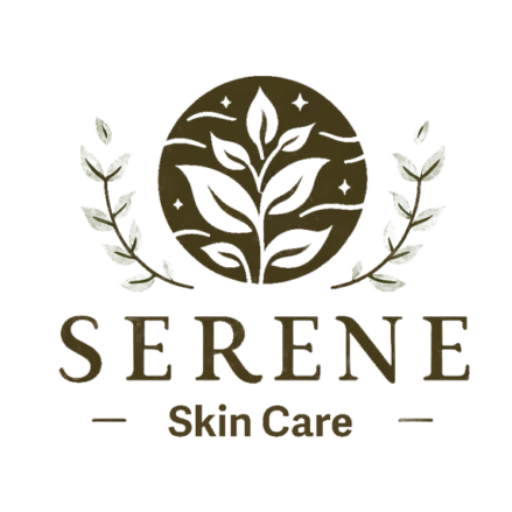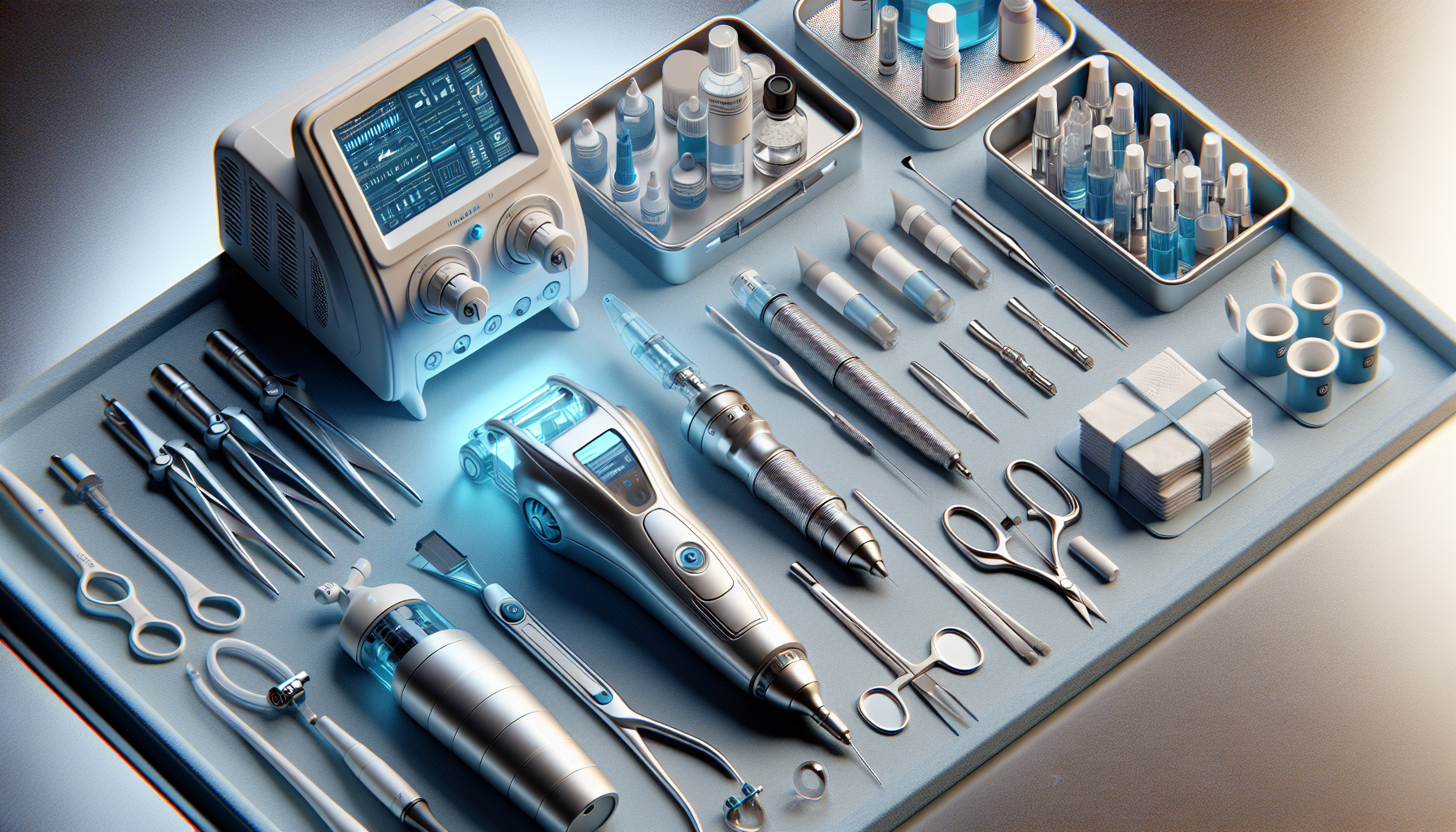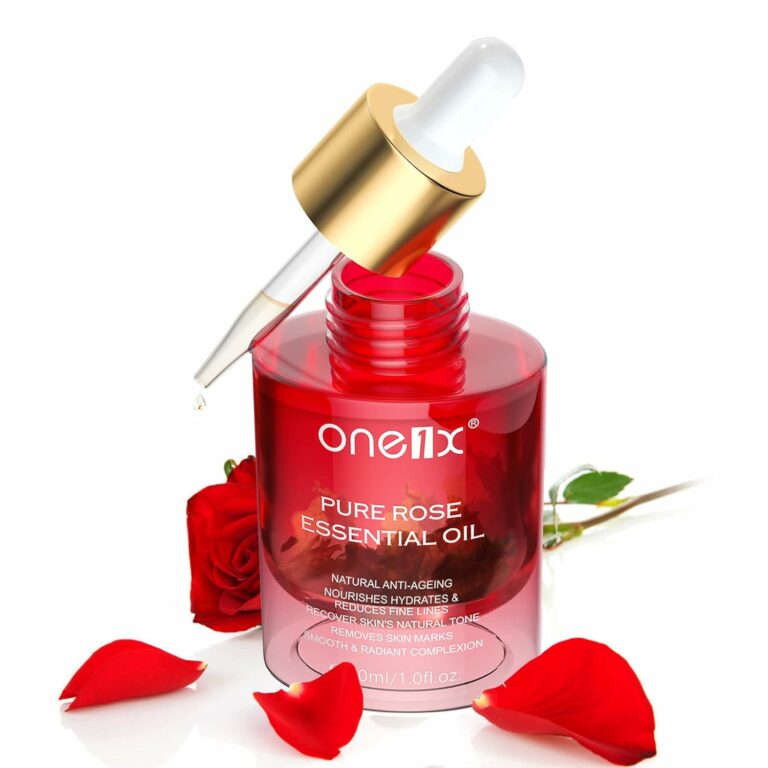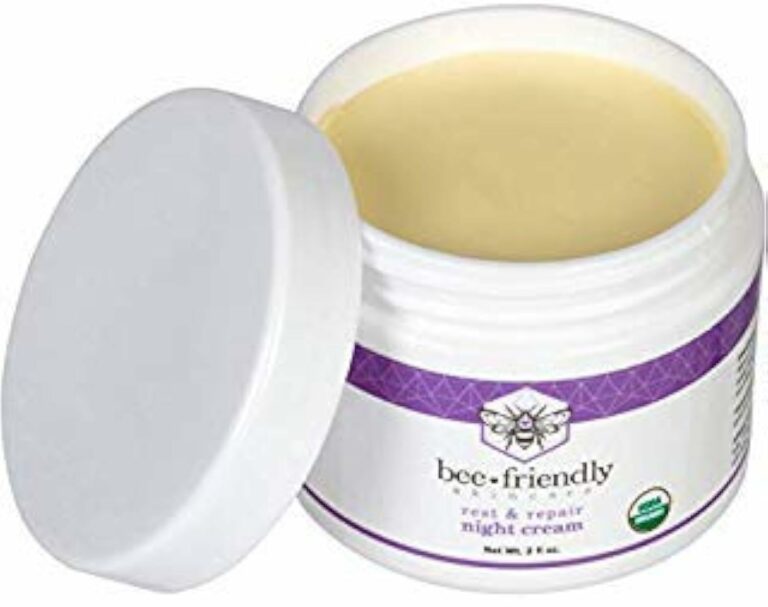Hyperpigmentation is a common skin condition that causes dark patches and uneven skin tone. In the quest for clearer, more radiant skin, individuals with hyperpigmentation often seek advanced techniques to effectively treat this concern. From laser therapy and chemical peels to topical creams and serums, this article explores various cutting-edge methods that dermatologists and skincare experts employ to combat hyperpigmentation, helping individuals achieve a brighter complexion and renewed confidence.
Understanding Hyperpigmentation
Hyperpigmentation refers to a common skin condition characterized by patches or areas of the skin that appear darker than the surrounding skin. It occurs when there is an overproduction of melanin, the pigment responsible for giving color to the skin, hair, and eyes. While hyperpigmentation is generally harmless and does not cause any physical discomfort, it can affect one’s self-esteem and confidence. Understanding the causes, types, and risk factors associated with hyperpigmentation is essential in implementing effective treatment strategies.
What is Hyperpigmentation?
Hyperpigmentation occurs when melanocytes, the cells responsible for producing melanin, become overactive and produce more pigment than usual. This excess melanin then appears as dark spots or patches on the skin. There are several factors that can trigger this overproduction of melanin, including exposure to the sun, hormonal changes, inflammation, and certain medications. It can affect anyone, regardless of age or skin type, but is more commonly observed in individuals with darker skin tones.
Causes of Hyperpigmentation
-
Sun Exposure: One of the primary causes of hyperpigmentation is prolonged and unprotected exposure to the sun’s harmful UV rays. The sun stimulates melanocytes, leading to increased melanin production.
-
Hormonal Factors: Fluctuations in hormone levels, particularly during pregnancy or with the use of hormonal contraceptives, can trigger the development of melasma, a type of hyperpigmentation commonly known as “pregnancy mask.”
-
Post-Inflammatory Hyperpigmentation: Inflammation resulting from skin injuries, such as acne, burns, or cuts, can cause an increase in melanin production, leading to hyperpigmentation in the affected areas.
-
Medications: Certain medications, such as antibiotics, antimalarials, and chemotherapy drugs, can cause drug-induced hyperpigmentation as a side effect.
Types of Hyperpigmentation
-
Melasma: Also known as chloasma or the “mask of pregnancy,” melasma is characterized by symmetric brownish patches on the face, particularly on the cheeks, forehead, and upper lip.
-
Solar Lentigines: Commonly referred to as age spots or sunspots, solar lentigines occur as a result of sun damage and appear as flat, tan, or brown spots on areas of the skin exposed to the sun.
-
Post-Inflammatory Hyperpigmentation (PIH): PIH is the result of skin inflammation or injury and appears as dark spots or patches that persist after the initial injury heals. It commonly occurs in individuals with darker skin tones.
-
Uneven Skin Tone: Uneven skin tone refers to an overall blotchiness or irregular distribution of melanin, resulting in patches of darker or lighter areas on the skin.
Risk Factors for Hyperpigmentation
While anyone can develop hyperpigmentation, certain individuals may be more prone to the condition. The following factors may increase the risk of experiencing hyperpigmentation:
-
Skin Type: Individuals with darker skin tones, especially those of African, Asian, or Hispanic descent, have a higher risk of developing hyperpigmentation. Their melanocytes are naturally more active and produce more melanin.
-
Hormonal Changes: Fluctuations in hormone levels, such as those experienced during pregnancy, menopause, or while taking hormonal contraceptives, can contribute to the development of hyperpigmentation.
-
Family History: A family history of hyperpigmentation or related conditions, such as melasma or lentigines, can increase the likelihood of developing the condition.
-
Sun Exposure: Excessive exposure to the sun’s UV rays without adequate protection, such as sunscreen or protective clothing, increases the risk of hyperpigmentation.
Now that we have explored the various aspects of hyperpigmentation, let’s delve into the different diagnostic methods used to identify this condition.
Diagnosing Hyperpigmentation
Diagnosing hyperpigmentation is primarily based on clinical examination and visual observation of the affected areas. However, in certain cases or when the diagnosis is uncertain, additional diagnostic methods may be employed to gain a better understanding of the underlying causes and to rule out other skin conditions. The following are some diagnostic techniques commonly used for hyperpigmentation:
Clinical Examination
A thorough clinical examination involves visually inspecting the affected areas of the skin and gathering information about the patient’s medical history. The healthcare professional will examine the size, shape, color, and distribution of the pigmented patches as well as inquire about any symptoms or recent changes. This initial examination helps to distinguish hyperpigmentation from other skin conditions and aids in determining the appropriate treatment options.
Skin Biopsy
In some cases, a skin biopsy may be performed to obtain a small sample of the affected skin for microscopic examination. This procedure involves numbing the area with a local anesthetic and surgically removing a small section of the skin. The sample is then sent to a laboratory, where it is analyzed under a microscope to confirm the presence of hyperpigmentation, identify the specific type, and rule out any other underlying conditions.
Wood’s Lamp Examination
A Wood’s lamp examination is a diagnostic test that uses ultraviolet (UV) light to visualize certain skin conditions. During this examination, the healthcare professional will shine a handheld Wood’s lamp, which emits UV light, onto the affected areas of the skin. The UV light causes different substances, including melanin, to emit fluorescence, allowing the healthcare professional to assess the distribution and intensity of the pigment and determine the type of hyperpigmentation.
Dermoscopy
Dermoscopy, also known as epiluminescence microscopy or skin surface microscopy, is a non-invasive technique that involves using a handheld device called a dermatoscope to examine the skin. The dermatoscope provides magnification and illumination, allowing for a more detailed evaluation of the skin’s surface. This technique helps to identify specific patterns, pigment distribution, and other features associated with hyperpigmentation. Dermoscopy is particularly useful in differentiating between types of hyperpigmentation and monitoring treatment progress.
Once hyperpigmentation is diagnosed, the appropriate treatment plan can be developed. In the following sections, we explore various treatment options for hyperpigmentation, including topical treatments, chemical peels, laser treatment, microdermabrasion, microneedling, radiofrequency, cryotherapy, and combination therapies.
Topical Treatments
Topical treatments are often the first line of defense in managing hyperpigmentation. These are products applied directly to the skin and include ingredients that help to regulate melanin production, inhibit excess pigmentation, and promote skin exfoliation. Some commonly used topical treatments for hyperpigmentation include:
Hydroquinone
Hydroquinone is a widely used topical ingredient known for its ability to lighten pigmented areas of the skin. It works by inhibiting the enzyme responsible for melanin production, thus reducing excess pigmentation. Hydroquinone is available in different concentrations and forms, including creams, gels, and lotions. However, it is important to use hydroquinone under medical supervision, as excessive or prolonged use can lead to skin irritation or a condition known as ochronosis.
Retinoids
Retinoids, derived from vitamin A, are effective in treating hyperpigmentation by increasing cell turnover and promoting the shedding of pigmented cells. They work by stimulating collagen production, reducing the appearance of dark spots, and improving overall skin texture and tone. Common retinoid formulations include tretinoin, adapalene, and tazarotene. These topical treatments are often prescribed by a healthcare professional and require careful use to avoid skin irritation and sun sensitivity.
Corticosteroids
Corticosteroids, also known as topical steroids, are occasionally used in the treatment of hyperpigmentation. They work by reducing inflammation in the skin, which can help lighten dark spots caused by post-inflammatory hyperpigmentation. Corticosteroids are available in various strengths and formulations, such as creams, ointments, and lotions. It is important to use corticosteroids only as directed by a healthcare professional and for short periods, as long-term use can lead to skin thinning and other side effects.
Kojic Acid
Derived from certain fungi, kojic acid is a natural topical ingredient that helps to inhibit tyrosinase, an enzyme involved in melanin production. By reducing melanin production, kojic acid can lighten dark spots and even out skin tone. It is available in various formulations, including creams, serums, and soaps. Kojic acid may cause skin irritation in some individuals, and it is important to use sun protection when using this ingredient, as it can increase sensitivity to sunlight.
Azelaic Acid
Azelaic acid is a naturally occurring compound found in grains, such as wheat, rye, and barley. It has both antimicrobial and exfoliating properties, making it a versatile treatment for hyperpigmentation. Azelaic acid helps to inhibit tyrosinase, reducing melanin production and preventing further pigmentation. It also helps to exfoliate the skin, promoting the shedding of pigmented cells and revealing a brighter complexion. Azelaic acid is available in various strengths and formulations, including gels and creams.
Vitamin C
Vitamin C, also known as ascorbic acid, is a potent antioxidant that offers various benefits for the skin, including its ability to reduce hyperpigmentation. It works by inhibiting tyrosinase activity and reducing melanin production, resulting in a more even skin tone. Vitamin C is often found in serums and creams and should be applied daily to clean skin. Regular use of vitamin C can also help to improve the skin’s overall texture, minimize fine lines and wrinkles, and protect against sun damage.
Topical treatments are an effective first step in managing hyperpigmentation, but in cases where the pigmentation is more stubborn or widespread, other advanced techniques may be considered. In the following sections, we explore some of these advanced treatment options, including chemical peels, laser treatment, microdermabrasion, microneedling, radiofrequency, cryotherapy, and combination therapies.
Chemical Peels
Chemical peels are dermatological procedures that involve applying a chemical solution to the skin, which causes controlled exfoliation and the removal of the outer layer of damaged skin cells. This process helps to improve skin texture, reduce hyperpigmentation, and promote the growth of new, healthier skin cells. There are different types of chemical peels available, each with varying depths of penetration and targeted skin concerns. Some commonly used chemical peels for hyperpigmentation include:
Glycolic Acid Peel
Glycolic acid peels are superficial peels that use glycolic acid, a type of alpha hydroxy acid (AHA), to exfoliate the skin. These peels are effective in treating fine lines, mild hyperpigmentation, and uneven skin tone. Glycolic acid peels work by loosening the bonds between dead skin cells, promoting their shedding and the production of new, healthier skin cells. Multiple treatments may be required to achieve the desired results, and downtime is minimal compared to deeper peels.
Salicylic Acid Peel
Salicylic acid peels are also superficial peels commonly used to treat hyperpigmentation and acne-prone skin. Salicylic acid is a beta hydroxy acid (BHA) that helps to exfoliate the skin, unclog pores, and reduce inflammation. This type of peel is particularly beneficial for individuals with oily or acne-prone skin and can help to improve skin texture, minimize scarring, and fade dark spots. As with any chemical peel, multiple treatments are usually necessary to achieve optimal results.
Trichloroacetic Acid Peel
Trichloroacetic acid (TCA) peels are medium-depth peels that penetrate deeper into the skin than glycolic or salicylic acid peels. TCA peels are effective in treating moderate hyperpigmentation, fine lines, and sun-damaged skin. The TCA solution causes controlled chemical injury to the skin, leading to the removal of damaged skin cells and the promotion of collagen production. This type of peel requires a longer recovery period and may cause temporary redness, swelling, and peeling.
Jessner’s Peel
Jessner’s peel is a medium-depth chemical peel that combines resorcinol, lactic acid, and salicylic acid. It is used to treat moderate hyperpigmentation, acne, and uneven skin tone. Jessner’s peel works by breaking down the bonds between dead skin cells, promoting their shedding and the reduction of pigmentation. Multiple treatments may be necessary, and downtime can vary depending on the depth of the peel. It is important to follow post-peel instructions and protect the newly revealed skin with sunscreen.
Chemical peels can be highly effective in treating hyperpigmentation, particularly when combined with other treatment modalities. However, for individuals who prefer non-ablative treatments with minimal downtime, laser treatment may be a suitable option.
Laser Treatment
Laser treatment, also known as laser therapy or laser resurfacing, utilizes targeted beams of light to remove or resurface the outer layer of the skin. This process encourages the growth of new, healthier skin cells, reduces hyperpigmentation, and promotes collagen production. Different types of lasers are used to target specific skin concerns and depths of pigmentation. Some commonly used lasers for hyperpigmentation include:
Intense Pulsed Light (IPL) Therapy
Intense Pulsed Light therapy, commonly referred to as IPL, uses short bursts of high-intensity light to treat hyperpigmentation and other skin concerns. IPL targets melanin in the skin, breaking it down and reducing the appearance of pigmented areas. This treatment also helps to stimulate collagen production and improve overall skin texture and tone. IPL therapy requires multiple treatment sessions spaced several weeks apart, but downtime is minimal, allowing individuals to resume their daily activities immediately.
Q-Switched Nd:YAG Laser
The Q-Switched Nd:YAG laser is a specific type of laser that delivers short pulses of high-energy light to the skin. It is highly effective in targeting pigmented areas, such as freckles, age spots, and melasma. The laser light is absorbed by the melanin in the skin, causing it to fragment and be gradually eliminated by the body’s natural processes. Q-Switched Nd:YAG laser treatments are relatively quick and require minimal downtime, making them suitable for individuals with busy lifestyles.
Fractional Laser Resurfacing
Fractional laser resurfacing is a type of laser treatment that delivers targeted microscopic laser beams to a fraction of the skin’s surface. This stimulates collagen production, reduces pigmentation, and improves overall skin texture and tone. Fractional laser resurfacing can be performed with ablative or non-ablative lasers, with each offering different benefits and outcomes. Ablative lasers remove the outer layer of the skin, while non-ablative lasers stimulate collagen production without damaging the skin’s surface. Downtime and recovery vary depending on the depth of the treatment.
Ruby Laser
The Ruby laser is a type of laser that emits red light at a specific wavelength, making it effective for treating hyperpigmentation, particularly dark, superficial pigmented lesions. The laser light is absorbed by the melanin in the skin, causing the pigmentation to break down and fade over time. Ruby laser treatments are gentle and require minimal downtime. Multiple sessions may be necessary to achieve the desired results, as targeted pigmented areas lighten gradually.
Laser treatment offers a more targeted approach to treating hyperpigmentation, allowing healthcare professionals to address specific areas of concern. However, individuals who prefer less invasive treatment options may opt for microdermabrasion.
Microdermabrasion
Microdermabrasion is a non-invasive cosmetic procedure that uses a handheld device to exfoliate the outer layer of the skin. It involves the gentle abrasion of the skin using either crystal or diamond-tip microdermabrasion systems. Microdermabrasion effectively removes dead skin cells, improves skin texture and tone, and reduces the appearance of hyperpigmentation. There are two main types of microdermabrasion:
Crystal Microdermabrasion
Crystal microdermabrasion utilizes a handpiece that sprays fine crystals onto the skin’s surface. These crystals gently exfoliate the skin and are then suctioned away along with the loosened dead skin cells. Crystal microdermabrasion helps to smooth the skin, reduce hyperpigmentation, and stimulate collagen production. Multiple sessions are usually required to achieve optimal results, and downtime is minimal, making it a popular treatment option.
Diamond-tip Microdermabrasion
Diamond-tip microdermabrasion involves using a handheld device with a diamond-tipped wand to gently exfoliate the skin. The diamond tip, aided by suction, removes the outer layer of dead skin cells, promoting the growth of new, healthier skin cells. Diamond-tip microdermabrasion is suitable for individuals with more sensitive skin, as it allows for greater control and customization of the treatment. Like crystal microdermabrasion, multiple sessions are typically required, and downtime is minimal.
Microdermabrasion offers a gentle yet effective solution for individuals seeking to improve the appearance of hyperpigmentation without the need for more aggressive procedures. However, for those looking for more advanced treatment options, microneedling may be an appealing choice.
Microneedling
Microneedling, also known as collagen induction therapy, is a minimally invasive procedure that involves creating controlled micro-injuries in the skin using a handheld device called a derma roller or a microneedling pen. This process stimulates the skin’s natural healing response, resulting in the production of collagen and elastin, and the reduction of hyperpigmentation. There are two main techniques used in microneedling:
Derma Roller
A derma roller consists of a small cylindrical roller covered in tiny needles. The roller is gently rolled over the skin, creating microscopic punctures that stimulate collagen production and improve the absorption of topical products. Derma rollers are available in various needle lengths to accommodate different areas of the body and skin concerns. Multiple sessions are usually required to achieve optimal results, and downtime is minimal, with some temporary redness and mild swelling.
Microneedling Pen
A microneedling pen, also known as an electronic or automated microneedling device, features a handheld device with a disposable needle cartridge. The pen is equipped with a motor that rapidly creates controlled micro-injuries in the skin. Microneedling pens offer more precision and control compared to derma rollers, allowing for customizable treatment depths and patterns. Like derma rollers, multiple microneedling sessions are typically needed for maximum results, and downtime is minimal.
Microneedling is a safe and effective treatment option for individuals looking to reduce hyperpigmentation and improve overall skin texture. The micro-injuries created by microneedling trigger the skin’s natural healing response, leading to a more youthful and even complexion. To enhance the effects of microneedling, radiofrequency can be combined with the treatment.
Radiofrequency
Radiofrequency (RF) treatments use controlled delivery of electromagnetic energy to target the deeper layers of the skin. This energy causes thermal heating, stimulating collagen production, and remodeling the skin. Radiofrequency treatments can be used alone or in combination with other procedures, such as microneedling, to enhance their effects. There are different types of radiofrequency treatments available, including:
Monopolar Radiofrequency
Monopolar radiofrequency treatments use a single electrode, which is applied to the skin, creating a focused area of heat beneath the surface. This heat reaches the deeper layers of the skin, stimulating collagen production and tightening the skin. Monopolar radiofrequency treatments are often used for skin tightening and improving overall skin texture.
Bipolar Radiofrequency
Bipolar radiofrequency treatments use two electrodes that are placed close together on the skin’s surface. This limits the depth of heat penetration, making it ideal for targeting more superficial skin concerns, such as hyperpigmentation. Bipolar radiofrequency treatments stimulate collagen production, reduce pigmentation, and improve overall skin texture and tone.
Fractionated Radiofrequency
Fractionated radiofrequency combines microneedling with the delivery of radiofrequency energy. This combination treatment creates controlled micro-injuries in the skin while simultaneously delivering radiofrequency energy to the deeper layers. Fractionated radiofrequency treatments stimulate collagen production, improve hyperpigmentation, and help tighten the skin. This treatment typically requires multiple sessions for optimal results and may have slightly longer downtime compared to microneedling alone.
Radiofrequency treatments offer a non-invasive option for individuals seeking to improve hyperpigmentation and overall skin quality. The controlled delivery of energy stimulates the skin’s natural healing response, resulting in a more youthful and even complexion. For those looking for alternative treatment options, cryotherapy may be a compelling choice.
Cryotherapy
Cryotherapy involves the use of extremely cold temperatures to treat various skin conditions, including hyperpigmentation. The cold temperature helps constrict blood vessels, reduce inflammation, and promote the removal of damaged skin cells. Cryotherapy techniques used for hyperpigmentation include:
Liquid Nitrogen Application
Liquid nitrogen cryotherapy involves applying liquid nitrogen, a very cold substance, directly to the skin using a cotton swab or cryospray device. The rapid freezing and thawing of the skin cells cause them to be destroyed, resulting in their eventual shedding and replacement with new skin cells. Liquid nitrogen cryotherapy is commonly used to treat lentigines, or age spots, and can be performed by a healthcare professional.
Cryopeel
Cryopeel is a specialized cryotherapy technique that combines the benefits of cryotherapy with the exfoliating properties of salicylic acid. This treatment involves applying a solution containing salicylic acid, along with a cooling cryotherapy device, to the skin’s surface. The cold temperature helps to numb the skin, while the salicylic acid exfoliates and removes the outer layer of dead skin cells. Cryopeel is effective in reducing hyperpigmentation, acne, and uneven skin texture.
Cryoslush
Cryoslush, also known as cryocompression, is a cryotherapy technique that involves applying cold, compressed air to the skin. The compressed air is delivered through a device that emits a focused stream of extreme cold. Cryoslush helps to reduce inflammation, soothe the skin, and improve overall skin tone. This technique is particularly useful for individuals with sensitive skin and is commonly used in combination with other treatments to enhance their effects.
Cryotherapy techniques can be effective in reducing hyperpigmentation, particularly when targeting specific lesions or areas of concern. The controlled application of cold temperatures helps to promote skin renewal and improve overall skin texture. For individuals seeking comprehensive treatment, combination therapies may be a viable option.
Combination Therapies
Combining multiple treatment modalities can often yield enhanced and longer-lasting results for individuals with hyperpigmentation. Combination therapies leverage the benefits of different treatments to target various aspects of hyperpigmentation, including pigment reduction, skin texture improvement, and collagen stimulation. Some commonly utilized combination therapies for hyperpigmentation include:
Chemical Peels with Laser Treatment
Combining chemical peels with laser treatment allows for a comprehensive approach to addressing hyperpigmentation. Chemical peels can prepare the skin by exfoliating the surface and reducing pigmentation, while laser treatment can target deeper pigmented areas and stimulate collagen production. This combination helps to achieve more even skin tone, smoother texture, and long-lasting results. However, it is important to consult with a healthcare professional to determine the appropriate types and sequence of treatments for individual needs.
Microdermabrasion with Microneedling
Combining microdermabrasion with microneedling creates a synergistic effect in treating hyperpigmentation. Microdermabrasion helps to exfoliate the outer layer of dead skin cells, preparing the skin for microneedling. Microneedling creates controlled micro-injuries that stimulate collagen production and improve pigmentation. This combination treatment promotes the growth of new, healthier skin cells, reduces hyperpigmentation, and refines overall skin texture. Multiple sessions may be required to achieve optimal results.
Radiofrequency with Cryotherapy
Combining radiofrequency with cryotherapy offers a dual approach to treating hyperpigmentation. Radiofrequency stimulates collagen production and tightens the skin, while cryotherapy helps to reduce inflammation and promote the removal of damaged skin cells. This combination treatment can improve overall skin tone, reduce hyperpigmentation, and enhance the effects of both radiofrequency and cryotherapy. As with any combination therapy, it is essential to consult with a healthcare professional to determine the most appropriate and effective treatment plan.
By combining different treatment modalities, healthcare professionals can tailor a comprehensive approach to treating hyperpigmentation, focusing on each individual’s unique needs and desired outcome. The synergy created by combination therapies can result in significant improvement in hyperpigmentation and overall skin quality.
In conclusion, with the variety of advanced techniques available today, the treatment of hyperpigmentation has become more comprehensive and effective. Understanding the causes, types, and risk factors associated with hyperpigmentation is crucial in implementing appropriate treatment strategies. From topical treatments to advanced procedures such as chemical peels, laser treatment, microdermabrasion, microneedling, radiofrequency, cryotherapy, and combination therapies, there are numerous options available to address hyperpigmentation and improve the appearance and confidence of individuals affected by this condition. It is important to consult with a healthcare professional to determine the most suitable treatment plan based on individual needs and goals. With the advancements in dermatological procedures, achieving a more even and radiant complexion is now within reach for individuals experiencing hyperpigmentation.







